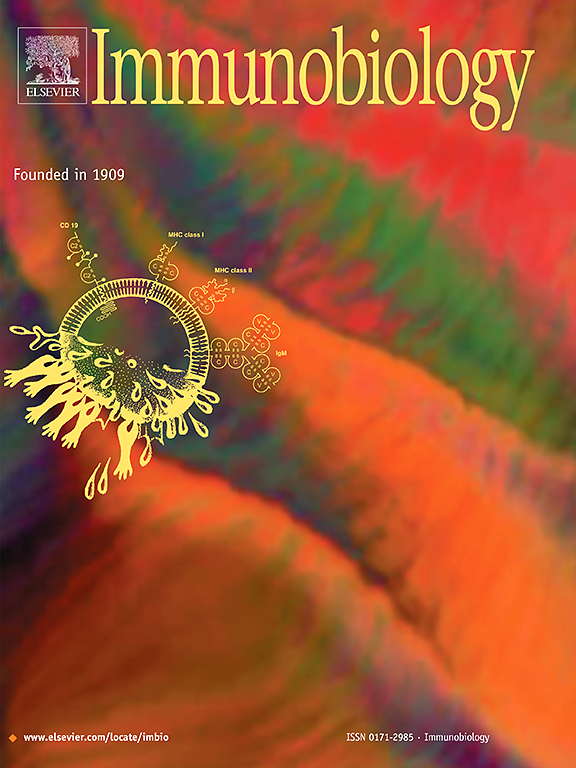Novel diagnostic biomarkers regulating macrophages autophagy in ischemic cardiomyopathy: An analysis integrating bulk RNA sequencing with single-cell RNA sequencing
IF 2.3
4区 医学
Q3 IMMUNOLOGY
引用次数: 0
Abstract
Macrophage autophagy plays a pivotal role in ischemia cardiomyopathy (ICM). However, the underlying mechanisms and macrophage autophagy-related biomarkers in ICM have not been elucidated. Therefore, this study was designed to explore novel macrophage autophagy-related biomarkers for ICM. The autophagy-related genes were downloaded from the Human Autophagy Modulator and intersected with the differentially expressed genes (DEGs) of GSE46224 identified with “limma” package in R to obtain the autophagy-related DEGs. Immune infiltration analysis showed that macrophages were the dominant immune cells in ICM tissue. Then the macrophage autophagy-related DEGs were identified using the weighted gene co-expression network analysis (WGCNA). A total of six hub genes were obtained from the PPI network. All of the hub genes showed specific diagnostic significance with AUCs higher than 0.7, as also validated in the external dataset GSE116250. RT-qPCR was conducted to detect the mRNA expression levels of hub genes in vivo ICM rat model. Single-cell RNA sequencing analysis was also performed to investigate gene expression profiles. Our study explored the macrophage autophagy-related biomarkers and their relative pathways in ICM, provided novel diagnostic biomarkers for ICM, and gave new insight into the progression mechanism of ICM.
缺血性心肌病中调节巨噬细胞自噬的新型诊断生物标志物:整合大量RNA测序和单细胞RNA测序的分析
巨噬细胞自噬在缺血心肌病(ICM)中起关键作用。然而,ICM的潜在机制和巨噬细胞自噬相关的生物标志物尚未阐明。因此,本研究旨在探索新的巨噬细胞自噬相关的ICM生物标志物。从Human Autophagy Modulator下载自噬相关基因,与R中“limma”包鉴定的GSE46224的差异表达基因(differential expression genes, DEGs)相交,得到自噬相关DEGs。免疫浸润分析显示,巨噬细胞是ICM组织中占优势的免疫细胞。然后利用加权基因共表达网络分析(WGCNA)鉴定巨噬细胞自噬相关基因。从PPI网络中共获得6个枢纽基因。所有枢纽基因的auc均大于0.7,具有特定的诊断意义,这在外部数据集GSE116250中也得到了验证。RT-qPCR检测ICM大鼠体内hub基因mRNA表达水平。单细胞RNA测序分析也用于研究基因表达谱。我们的研究探索了ICM中巨噬细胞自噬相关的生物标志物及其相关通路,为ICM提供了新的诊断生物标志物,并对ICM的进展机制有了新的认识。
本文章由计算机程序翻译,如有差异,请以英文原文为准。
求助全文
约1分钟内获得全文
求助全文
来源期刊

Immunobiology
医学-免疫学
CiteScore
5.00
自引率
3.60%
发文量
108
审稿时长
55 days
期刊介绍:
Immunobiology is a peer-reviewed journal that publishes highly innovative research approaches for a wide range of immunological subjects, including
• Innate Immunity,
• Adaptive Immunity,
• Complement Biology,
• Macrophage and Dendritic Cell Biology,
• Parasite Immunology,
• Tumour Immunology,
• Clinical Immunology,
• Immunogenetics,
• Immunotherapy and
• Immunopathology of infectious, allergic and autoimmune disease.
 求助内容:
求助内容: 应助结果提醒方式:
应助结果提醒方式:


